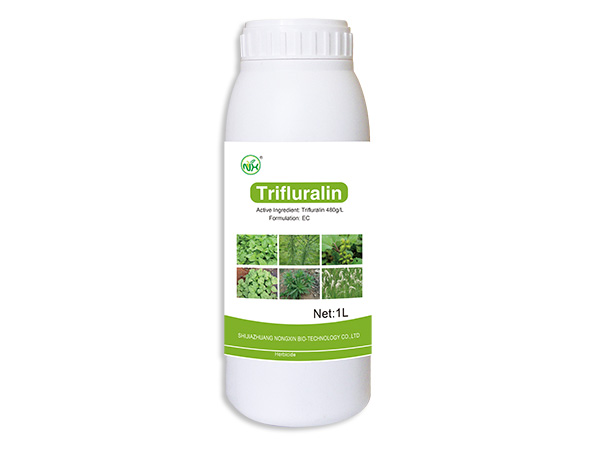Search Product
Search here for what you are looking for:
Search here for what you are looking for:

Trifluralin, selective herbicide instruction
Trifluralin is suitable for soybean, cotton, wheat, upland rice, sugar cane, sugar beet, sunflower, tomato, cabbage, kidney bean, carrot, celery, coriander and other 40 kinds of crops and orchards, forestry nurseries, flowers, lawns, plantations, etc. Annual oat weeds and parts such as oats, foxtail, crabgrass, goosegrass, alkaligrass, ginseng, bluegrass, maiden, medlar, sorghum, sauerkraut, baocao, and purslane Dicotyledon weed.
Instructions:
1. Cotton field before sowing, use Trifluralin 48%EC 1875-2250ml per hectare, solved in 750kg water, evenly spray on the soil surface, next mix 2-3cm soil, and then plant after mixing.
2. After the soybean field is well reformed, use Trifluralin 48%EC of 1500-2250ml per hectare, and solved in 525kg water, evenly spray on the soil surface, and then mix the soil 1-3cm.
3. Rape, peanut, sesame and vegetable fields, use 48% EC1500-2250ml per hectare 3-7 days before sowing, and immediately mix the soil. Sunflower, kenaf, carrot, celery, fennel, beans, peas, etc, can be sown immediately after application.

Precautions:
1. Trifluralin vapor pressure is high, used in cotton film mulching, 48%EC, should not exceed 1500ml per hectare; for leafy vegetables, the dosage should not exceed 2250ml, so as to avoid phytotoxicity.
2. Trifluralin is volatile and photolyzed, and must be mixed immediately after application.
Soybeans were treated in the soil 5 to 7 days before sowing, and immediately mixed with soil 5 to 7 cm. The amount of Trifluralin used varies according to the soil organic matter content, and is generally 1.5 to 3 liters per hectare with 48%EC trifluralin. It can be used in combination with herbicides such as chlorpyrifos, oxazinone and carboxymethylidene ether to complement the grasshopper spectrum and improve crop safety. For rapeseed, peanut, sesame, cotton, cruciferous vegetables and other crop fields, it should be applied before sowing or seeding. It should not be used in the direct seeding nursery fields of Liliaceae, Compositae, Solanaceae, Cucurbitaceae, and Polygonaceae. For the transfer of vegetable tomatoes, eggplant, bell pepper, cabbage, cauliflower, etc., weeds should be released before or after transfer. Before use, in the transfer of cucumber fields, when the seedling height is 10~15 cm, it can be used for soil treatment. The celery, onion, ditch, and old root leeks can be transplanted. Winter wheat is treated before pouring frozen water. Grapes, apples and other plantations, after the loose soil in the spring, the product should be applied before the sprout, be careful not to spray on the grapes and fruit trees.